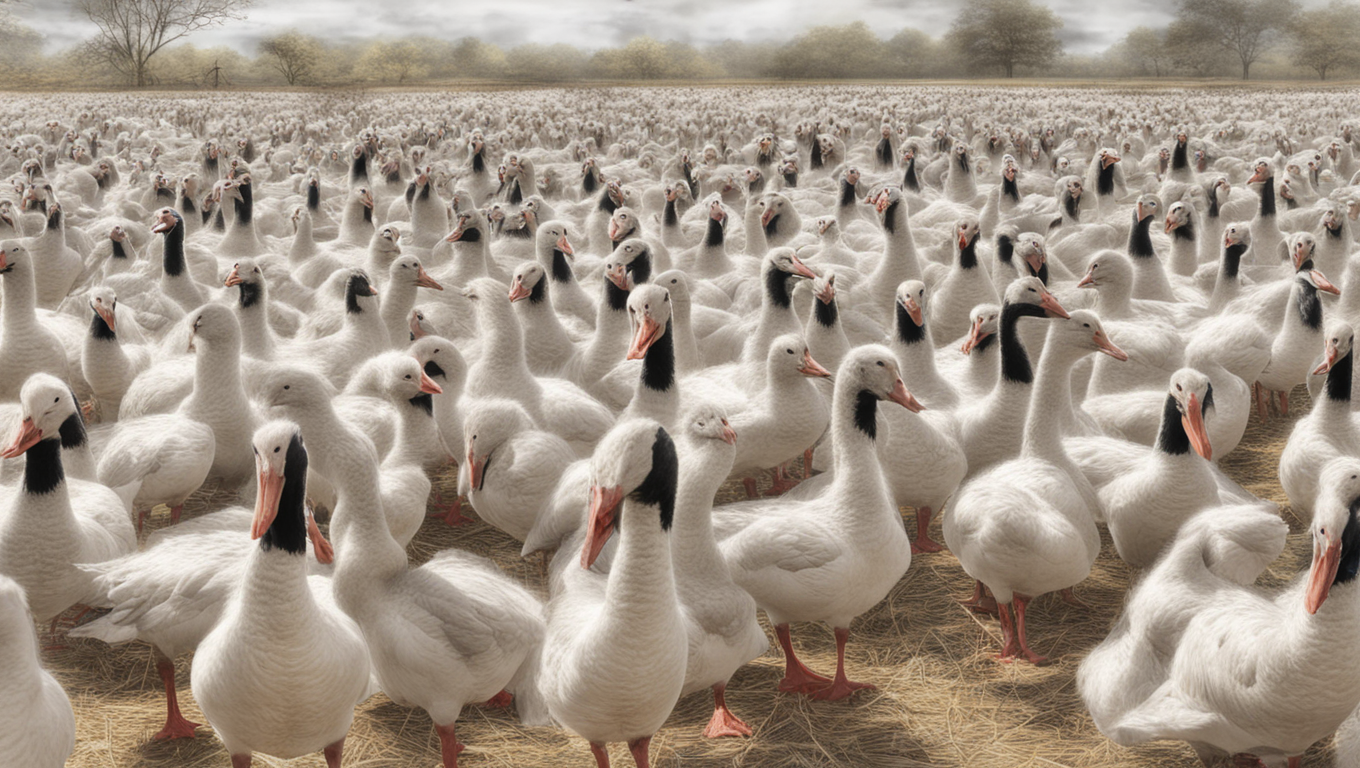A team of 16 college students from Shenzhen University has made a groundbreaking contribution to the goose farming industry in China by developing an artificial intelligence (AI) program that increases the survival rate of lion-head geese by 30 percent. This breed of geese, known for their role in the production of local marinated goose dishes in the Chaoshan area of Guangdong Province, has historically been difficult to raise.
For over 300 years, breeders in Chenghai District, Shantou City have relied on their experience to judge the health of geese by observing their behavior and feeling their body temperature with their hands. While this rule of thumb has been effective, it is not efficient enough during emergency situations. Diseases can devastate a farm of over a thousand geese in as little as ten days.
In 2018, Jin Shutao, a young entrepreneur and professional goose farmer, decided to harness the power of technology to tackle this problem. He invited 16 students from Shenzhen University’s Tencent cloud AI BEng program to his lion-head goose farming cooperative. With guidance from teachers at the university and engineers from Chinese internet giant Tencent, they embarked on an ambitious project to develop an AI program that could identify sick geese in a crowded farming space.
The team faced numerous challenges, starting with the installation of cameras. Traditional QR code-based recognition methods used for other animals, such as cows or pigs, did not work for geese. They overcame this obstacle by using existing farm cameras to capture images of geese and manually labeling them. This painstaking process involved categorizing and tagging 6,000 images of 300,000 geese.
The team then focused on developing and refining the AI algorithm. They improved the recognition algorithm to identify lion-head geese in crowded scenes and optimized the tracking algorithm to monitor the duration each goose spent in one spot. After numerous model adjustments, they realized that there is no one-size-fits-all algorithm and that customization is necessary.
As the students worked on the project, they gained a deeper understanding of the geese. They discovered that measuring the body temperature of adult lion-head geese was challenging due to their thick feathers. As a supplementary means of identifying sick geese, they started focusing on feverish baby geese. Additionally, they found a correlation between goose diseases and weather conditions such as typhoons and haze, leading them to incorporate data observation and analysis functions into the program for optimization.
After months of hard work, the AI goose program was continuously updated, providing real-time alerts for “listless geese” and “feverish geese” and displaying data on temperature, humidity, PM2.5 levels, and trends. The program has had a significant impact on the survival rate of lion-head geese, increasing it by 30 percent.
“Developing AI isn’t about sitting in an air-conditioned room and writing code. It’s about learning to write code in ‘goose dung,'” said Shen Linlin, director of the visual research institute under Shenzhen University.
This innovative project showcases the power of AI in solving real-world problems. By combining their expertise with the guidance and support from industry professionals, the students were able to make a tangible difference in the goose farming industry. Their AI program not only increases the survival rate of lion-head geese but also brings efficiency and accuracy to the breeder’s work. As technology continues to advance, we can expect more breakthroughs like these that revolutionize various industries and improve lives around the world.





Use the share button below if you liked it.